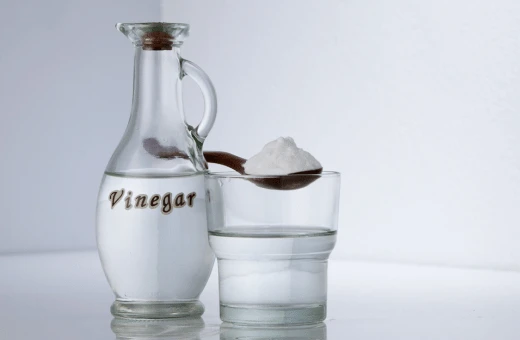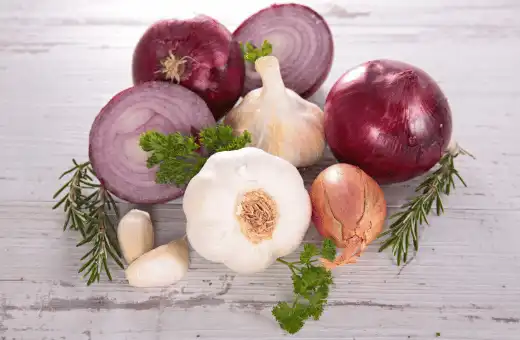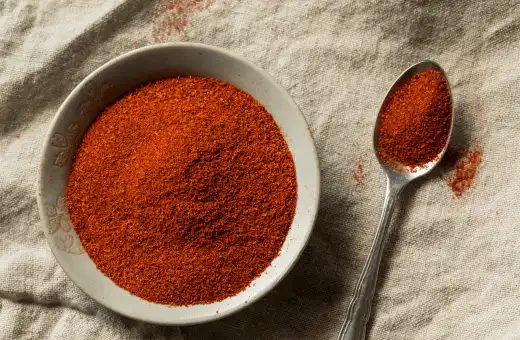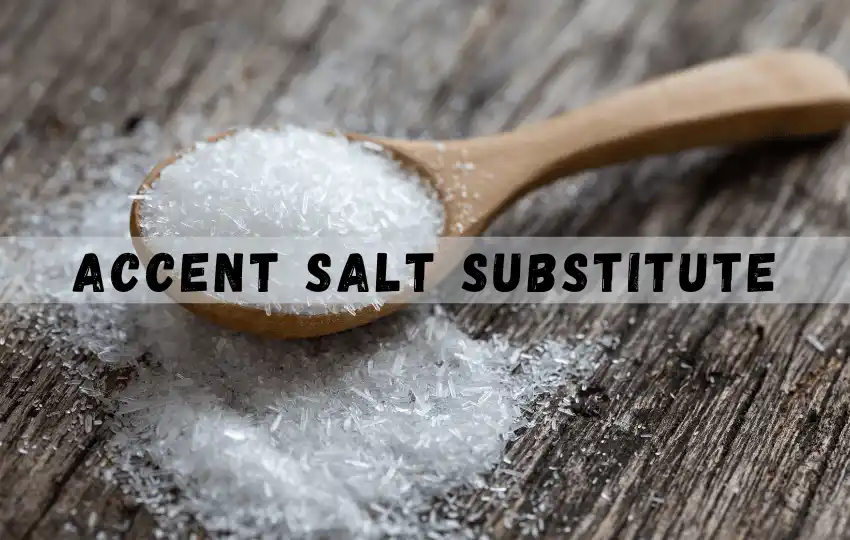Salt is an essential ingredient when cooking or preparing food. This adds flavor and enhances the taste of any dish.
However, excessive salt intake can lead to hypertension, heart disease, and other health issues.
As an experienced home cook or a chef, it is always a challenge to find alternatives or substitutes for salt that are both healthy and flavorful.
I have collected a list of the 15 best accent salt substitutes, which are easy to find and use for your everyday cooking needs.
In short, " What can I use instead of accent salt?" Herbs and Spices, Lemon or Lime Juice, Vinegar, Coconut Aminos, Nutritional Yeast, Dulse Flakes, Vegetable Broth, Tomato Paste, Mustard, Garlic and Onion, Tamari or Soy Sauce and many more.
What is accent salt, and what does accent salt taste like?
Accent is a brand of flavor enhancer known as monosodium glutamate (MSG). MSG is a type of sodium salt derived from the amino acid known as glutamic acid.
It’s found naturally in various foods like tomatoes, cheese, and meats, but in the case of products like Accent, it’s produced through a fermentation process identical to the one used to make yogurt or vinegar.
MSG has a unique taste known as umami, which is often described as a savory, broth-like, or meaty flavor. It’s one of the five basic tastes, along with sweet, sour, bitter, and salty.
MSG is used in cooking to help intensify the flavor of foods, but it doesn’t have a distinct flavor on its own. Instead, it enhances the natural flavors of the dish it’s added to.
There have been some concerns about potential side effects of MSG, such as headaches or flushing, often referred to as “MSG symptom complex” or “Chinese restaurant syndrome”.
Yet, the U.S. Food and Drug Administration (FDA) has classified MSG as a food ingredient that’s generally recognized as safe (GRAS), and scientific studies have not found an invariant link between MSG consumption and these symptoms in the general population.
As with any food ingredient, some individuals may be more sensitive to it than others.
Uses of accent salt
Accent Salt, which is essentially Monosodium Glutamate (MSG), is primarily used as a flavor enhancer in cooking. It’s known for enhancing the savory, umami flavor in dishes. Here are some common uses:
1. Soups and Broths: Accent Salt can enhance the savory flavor of soups and broths, making them taste more robust and satisfying.
2. Meat Dishes: It can be used as a seasoning for meats, poultry, and fish, boosting their natural flavors.
3. Vegetable Dishes: Accent Salt can help bring out the flavors in vegetable dishes, making them taste richer and more complex.
4. Sauces and Gravies: Adding a little Accent Salt to sauces and gravies can make them more flavorful.
5. Casseroles and Stews: These hearty dishes can benefit from the flavor-enhancing properties of Accent Salt.
6. Marinades and Rubs: Accent Salt can be used in marinades and rubs for meat, poultry, or fish, helping to enhance their flavor.
Where to buy accent salt?
If you searching for where to buy accent salt, there are a few different places you can go. Many specialty food stores carry it, as do some international grocery stores.
You can also order online from many retailers that provide a variety of diverse flavors and types of accent salt.
Best accent salt substitutes
1. Herbs and Spices

Herbs and spices are a wonderful substitute for salt. They bring much more flavor and taste to any dish while being low in sodium.
Some of the best herbs and spices instead of salt are parsley, thyme, rosemary, cumin, coriander, and turmeric.
You can use these in any dish, whether it is a soup, salad, or main course. Start by adding small quantities and adjust the seasoning to your taste.
2. Lemon/Lime Juice
Lemon juice or lime juice are great substitutes for salt when it comes to adding acidity to a dish.
It enhances the flavors of your dish and can use in marinades, salad dressings, and sauces. Its natural sourness reduces the need for salt as it acts as a natural flavor enhancer.
3. Vinegar

Vinegar is another great substitute for salt. It adds a tangy, sour, and acidic taste to any dish; you can utilize it in marinades, dressings, and sauces.
Can use apple cider vinegar, balsamic vinegar, red wine vinegar, or any different type of vinegar you prefer.
4. Coconut Aminos
Coconut aminos are a great choice for soy sauce, which contains a high amount of sodium. This is made from the sap of coconut trees and is low in sodium, gluten-free, and soy-free.
It has a little sweet taste and can be used in stir-fries, marinades, and dressings.
5. Nutritional Yeast
Nutritional yeast is a great salt substitute for those on a vegan or vegetarian diet.
This is high in protein, fiber, and vitamins and has a cheesy, nutty flavor. You can sprinkle it on salads, pasta, and soups or use it in sauces and dressings.
6. Dulse Flakes

Dulse flakes are a type of seaweed that is dried and usually found in whole food stores. It tastes salty and can be used as a salt alternative in soups, stews, and salads.
This is increased in vitamins and minerals and can provide a unique flavor to your dishes.
7. Vegetable Broth
Vegetable broth is a salt-free and low-sodium alternative to chicken or beef broth. It adds savor and depth to your dishes and can use in soups, stews, and sauces.
You can create your own vegetable broth by boiling vegetables and herbs in water.
8. Tomato Paste
Tomato paste is a made form of tomatoes that adds depth and savor to any dish. It can be used in stews, soups, sauces, and casseroles instead of salt.
This also has multiple health benefits and is a great source of vitamins.
9. Mustard
Mustard is a great substitute for salt in sauces, marinades, salad dressings, and dips. It has a strong, tangy, and slightly spicy taste and is low in sodium.
You can use mustard as a substitute for salt in most recipes.
10. Garlic and Onion

Garlic and onion are classic aromatic flavors, and they add sweetness and savory flavor to your dishes.
You can use fresh or dried garlic and onion in your meals. Add garlic to spaghetti sauce or roasted vegetables, or use onion in soups, stews, and dressings.
11. Tamari or Soy Sauce
Soy sauce contains less sodium than regular table salt and provides an umami flavor to the dish.
Tamari is a wheat-free alternative to soy sauce that can be used instead of salt in stir-fries, marinades, and dressings.
12. Liquid Smoke
Liquid smoke is an excellent salt substitute that gives a smoky flavor to your meat and vegetable dishes. It is made from evaporated wood smoke and can be used sparingly because of its potent flavor.
13. Dijon Mustard
Dijon mustard can add tanginess and depth of flavor to your dishes; it’s perfect for dressings, marinades, and sauces.
It has a distinct taste that works well with roasted meat, fish, or steamed vegetables.
14. Smoked Paprika

Smoked Paprika provides a smoky flavor and deep color to your dishes. It is perfect for seasoning meats, soups, stews, and roasted vegetables.
Smoked Paprika comes in a range of flavors and heat levels; choose the one that works for you.
15. Seaweed
Seaweed is a natural source of umami flavor and minerals like iodine, potassium, and magnesium. You can add kelp or dulse flakes to dressings, soups, stews, and savory dishes.
how to make accent seasoning at home so easy way
Accent seasoning is essentially pure MSG (monosodium glutamate), which is a specific compound that’s not possible to create from scratch at home.
However, you can create a simple, homemade umami seasoning that can provide a similar flavor enhancement to your dishes.
This seasoning relies on ingredients high in natural glutamates, which provide that umami flavor.
Here’s a simple recipe for homemade umami seasoning:
Ingredients:
– 1/4 cup dried mushrooms (porcini or shiitake)
– 1/4 cup nutritional yeast
– 1 tablespoon salt
– 1 tablespoon onion powder
– 1 tablespoon garlic powder
Instructions:
1. In a spice grinder or a blender, grind the dried mushrooms into a nice powder.
2. Mix the mushroom powder with the nutritional yeast, salt, onion powder, and garlic powder until well combined.
3. Store your homemade umami seasoning in an airtight container.
You can use this seasoning in the same way you would use Accent seasoning. This will add a savory depth of flavor to your dishes.
Remember that while this homemade seasoning can enhance the flavor of your dishes, it won’t taste exactly like Accent seasoning, as it doesn’t contain pure MSG. I
t should still provide a pleasing umami boost to your meals.
Conclusion on accent salt substitute
In conclusion, these 15 best accent salt substitutes will bring unique tastes and textures to your dishes while being low in sodium and healthy. You no longer have to compromise on flavor when it comes to your health.
Use these substitutes in your daily cooking, and you will be amazed by the results. As a chef, I always encourage people to experiment with different ingredients and discover new flavors and tastes.
Happy cooking!
FAQs on accent salt substitute
Q1. What is similar to accent salt?
Accent Salt is essentially pure monosodium glutamate (MSG), which is a flavor enhancer known for adding umami, or savory taste, to dishes. Similar products include Ajinomoto, which is another brand of pure MSG. There are also other flavor enhancers like Maggi Seasoning and bouillon cubes, which contain MSG, among other ingredients.
Natural foods high in glutamates, like tomato paste, soy sauce, and Parmesan cheese, can also be used to add a similar savory depth of flavor to dishes. These alternatives may not taste exactly the same as Accent Salt, but they can provide a similar umami boost to your meals.
Q2. Is the Accent the same as Ajinomoto’s?
Yes, both Accent and Ajinomoto are brand names for the food additive monosodium glutamate (MSG), which is used as a savor enhancer in cooking. Both products essentially provide the same function — they amplify the savory, umami flavor in dishes.
The major contrast between the brand name and possibly the country of manufacture. Ajinomoto is a Japanese company that was the original commercial producer of MSG, while Accent is a brand name commonly seen in the United States.
Q3. Is Accent salt the same as salt?
Accent Salt is not the same as regular table salt. The Accent is a brand name for a product that contains monosodium glutamate (MSG), which is a flavor enhancer known for boosting the savory, umami taste in foods. It’s a sodium salt of the amino acid known as glutamic acid.
On the other hand, regular table salt, also known as sodium chloride, is a mineral that’s used to add salty flavor to foods. It doesn’t have the same umami-enhancing properties as MSG.
While both Accent Salt and table salt contain sodium, they are chemically distinct and have different effects on flavor. It’s also worth noting that, like table salt, MSG should be used in moderation.
Q4. What spices are good substitutes for salt?
When seeking substitutes for salt in your cooking, there are various spices and herbs that can provide flavor without relying solely on sodium. Here are some options to consider:
1. Herbs: Fresh or dried herbs like basil, oregano, thyme, rosemary, and parsley can add depth and complexity to dishes. Experiment with different combinations to find flavors that suit your taste.
2. Citrus: Lemon or lime zest and juice can provide a tangy and bright flavor to dishes. They work well in marinades, dressings, and seafood recipes.
3. Vinegar: Different types of vinegar, such as balsamic, apple cider, or rice vinegar, can add acidity and flavor to dishes without relying on salt.
4. Garlic and Onion: These pungent ingredients can add depth and savory notes to a wide range of dishes. Utilize them in their fresh, dried, or powdered forms.
5. Spices: A variety of spices can enhance flavors and reduce the need for salt. Examples include black pepper, cumin, Paprika, turmeric, chili powder, cinnamon, and nutmeg. Experiment with different spice blends to create robust flavor profiles.
6. Herb Blends: Pre-made herb blends like Italian seasoning, herbes de Provence, or za’atar can offer a mix of complementary flavors that add depth to your dishes.
7. Umami-Rich Ingredients: Umami-rich foods like mushrooms, miso paste, nutritional yeast, soy sauce, and tamari can impart savory flavors, enhancing the overall taste of a dish.
8. Spicy Heat: If you enjoy spicy flavors, incorporate chili peppers, cayenne pepper, or hot sauces to provide a kick without relying on salt.

